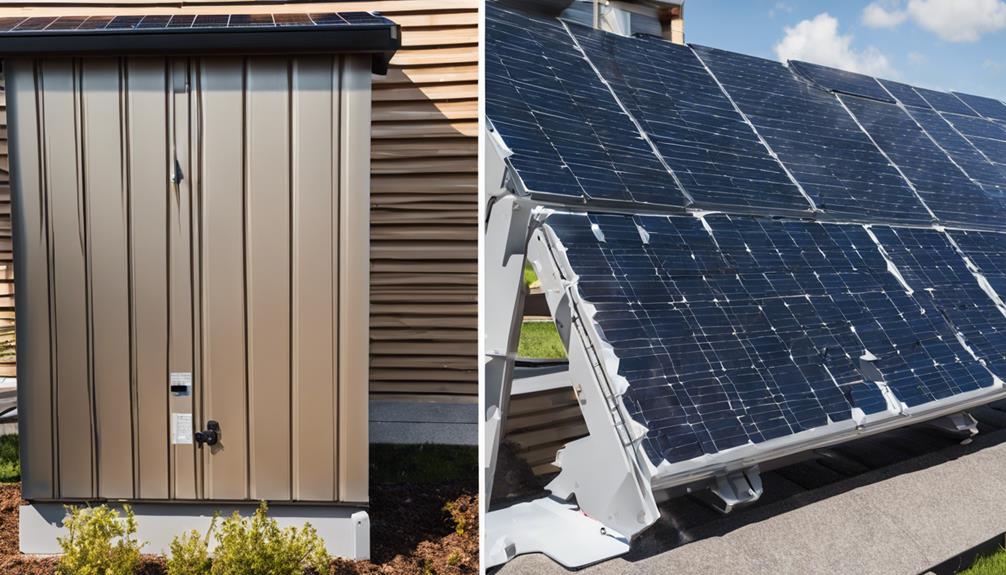
Solar panels have become an increasingly popular choice for homeowners and businesses looking to harness renewable energy. As you consider making the switch to solar power, one of the most common questions arises: how big is a solar panel? In this article, we will explore the sizes, dimensions, and factors that affect solar panel size, giving you a comprehensive understanding of what to expect when installing solar panels on your property.
Understanding Standard Solar Panel Sizes
When it comes to solar panels, there are standard sizes that most manufacturers adhere to. The most common solar panel size available on the market today is approximately 65 inches by 39 inches, which translates to about 17.5 square feet per panel. This size is typical for traditional monocrystalline and polycrystalline solar panels, which are the two most prevalent types used in residential and commercial installations. While these dimensions are standard, it is essential to note that there are variations in size depending on the brand, technology, and intended application of the solar panel.
Dimensions of Different Types of Solar Panels
Solar panels come in various types, each with its own dimensions. Monocrystalline panels, known for their high efficiency and sleek appearance, generally have a size of around 60 to 72 cells, which affects their overall dimensions. For instance, a standard 60-cell monocrystalline panel will typically measure about 65 inches by 39 inches, while a 72-cell panel may be around 77 inches by 39 inches. On the other hand, polycrystalline panels tend to be slightly larger and less efficient, with similar cell configurations but varying dimensions. Understanding the size differences among solar panel types can help you make an informed choice based on your energy needs and available space.
Factors Influencing Solar Panel Size
Several factors influence the size of solar panels, including energy output, space availability, and installation preferences. The energy output of a solar panel is measured in watts, and larger panels typically generate more power. However, the efficiency of the solar cells plays a crucial role as well. Higher-efficiency solar panels can produce more energy in a smaller area, making them suitable for installations with limited space. Additionally, the orientation and tilt of the panels can also affect their performance, which may influence the choice of panel size during installation.
How Solar Panel Size Affects Energy Production
Understanding how the size of a solar panel impacts energy production is vital for homeowners and businesses. Larger solar panels generally produce more electricity due to their increased surface area, allowing them to capture more sunlight. However, it’s important to consider the efficiency rating of the panels as well. For instance, a smaller, high-efficiency solar panel may produce more energy than a larger, lower-efficiency panel. Therefore, when assessing solar panel sizes, it’s essential to look at both the dimensions and the efficiency ratings to determine the best fit for your energy needs.
Calculating the Number of Solar Panels Needed
To determine how many solar panels you will need for your home or business, you must first assess your energy consumption. This is typically measured in kilowatt-hours (kWh). Once you have your average monthly usage, you can estimate the total wattage required from your solar array. For example, if your energy consumption is 900 kWh per month, and you are using standard 300-watt solar panels, you would need approximately 10 solar panels to cover your energy needs. By calculating how many panels you require based on their size and wattage, you can effectively design a solar array that meets your energy demands.
Space Considerations for Solar Panel Installation
When asking how big is a solar panel, it is equally important to consider the space required for installation. Each solar panel needs sufficient space not only for its dimensions but also for proper mounting and maintenance access. On average, you should allocate about 100 square feet of roof space per solar panel. This space consideration is crucial for ensuring that the panels can be installed at the correct angle for optimal sun exposure and are accessible for any future maintenance or cleaning. Evaluating your roof’s orientation, shading, and structural integrity will help you make informed decisions about solar panel installation.
Alternative Sizes and Custom Solutions
For those with unique energy requirements or limited space, there are alternative solar panel sizes and custom solutions available. Some manufacturers offer smaller solar panels designed for specific applications, such as RVs, boats, or off-grid systems. These panels may vary significantly in size, with dimensions as small as 30 inches by 20 inches. Additionally, some companies provide custom solar panel solutions that can be tailored to fit specific areas or aesthetic preferences. If traditional solar panel sizes do not meet your needs, exploring these alternative options may be beneficial.
Conclusion: Making Informed Decisions on Solar Panel Sizes
In summary, understanding how big is a solar panel is crucial for anyone considering solar energy. With standard sizes ranging from 65 inches by 39 inches for traditional panels to custom solutions for unique applications, it’s essential to assess your energy needs, available space, and the efficiency of the panels. By doing thorough research and calculations, you can make informed decisions that will lead to a successful solar installation, ultimately saving you money on energy bills while contributing to a more sustainable future. Whether you choose standard panels or opt for customized solutions, the right size and type of solar panel can significantly impact your energy production and efficiency.





